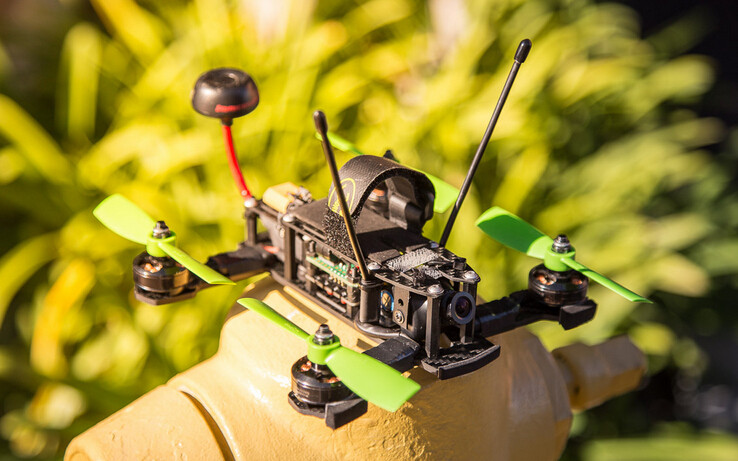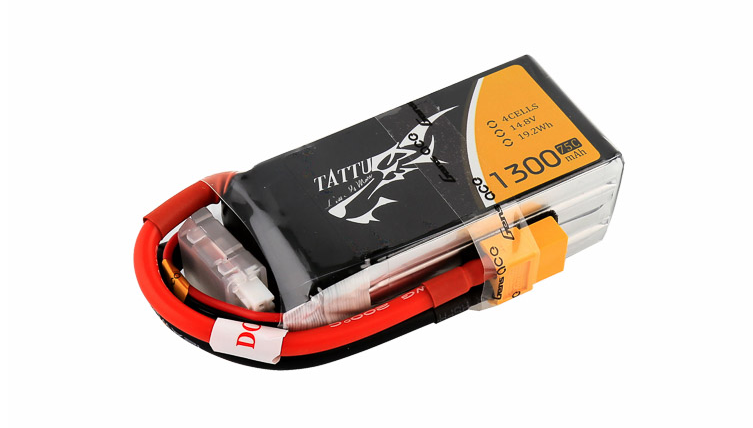What is FPV and the development of FPV
Aug 2nd 2016
FPV is an acronym for "First Person View" and usually refers to the recreational sport of flying RC aircraft, with tiny cameras on board that transmit live video down to the aircraft operator/pilot.
It has been gaining popularity since the last decade due to the decreasing costs of FPV technology, and the ease with which live videos can be streamed these days. You will find tons of videos on Youtube, of footage from FPV aircraft, some of the more advanced set ups also show information such as speed, altitude and direction. GoPro cameras mounted on the plane provide steady and high definition footage that is streamed live from the antennas on board, or it can be stored until the aircraft lands for editing and uploading.
Flying one of these aircraft from a first person view perspective is extremely entertaining and has become a hobby as well as a sport among some serious enthusiasts who even hold FPV aircraft races.
 Any model RC aircraft can be modified for FPV usage, including propeller based aircraft such as fixed wing airplanes, or RC balloons. Quadcopters are also a great platform for mounting cameras due to their ability to maneuver through tight spaces and hover steadily on top any location.
The basic FPV setup consists of a RC aircraft or drone, with a video camera mounted on board. This video camera which is usually powered by FPV batteries is linked to a transmitter that sends the live feed from the camera down to a receiving antenna on the ground. The place where the receiving antenna and operator are located is known as the "ground station". The live feed from the aircraft can be seen through a pair of video glasses or a monitor. There are more complex setups that involve a motion detecting setup on the operators head, and a camera that can pan and tilt. This allows for a more realistic first person experience and the operator will feel like a real pilot sitting in the cockpit of an airplane, because the camera moves in the direction that he turns his head thanks to the motion sensors in his helmet/glasses. Now, there are many readily available kits in the RC hobbyist market for people who want to convert their regular RC aircraft into FPV models. These kits consist of a transmitter antenna and receiver antenna, in which the receiver antenna may or may not be mounted on the display. A camera is also included, usually alongside a pair of FPV goggles or screen. Also required is a nice set of FPV batteries to power your aircraft and on board cameras.
A good FPV battery is one that can provide consistent high discharge for a time period of 30 minutes to one hour. One of the most amazing battery models out there for FPV flying is the Tattu 1300mah battery that is a 4-cell 14.8 volt battery with a 75C continuous discharge rating. It is a lithium polymer battery with a burst discharge capacity of 150C, and is extremely light at just 154g. The light weight and powerful discharge ensure longer flight duration and higher performance for your FPV aircraft.
Any model RC aircraft can be modified for FPV usage, including propeller based aircraft such as fixed wing airplanes, or RC balloons. Quadcopters are also a great platform for mounting cameras due to their ability to maneuver through tight spaces and hover steadily on top any location.
The basic FPV setup consists of a RC aircraft or drone, with a video camera mounted on board. This video camera which is usually powered by FPV batteries is linked to a transmitter that sends the live feed from the camera down to a receiving antenna on the ground. The place where the receiving antenna and operator are located is known as the "ground station". The live feed from the aircraft can be seen through a pair of video glasses or a monitor. There are more complex setups that involve a motion detecting setup on the operators head, and a camera that can pan and tilt. This allows for a more realistic first person experience and the operator will feel like a real pilot sitting in the cockpit of an airplane, because the camera moves in the direction that he turns his head thanks to the motion sensors in his helmet/glasses. Now, there are many readily available kits in the RC hobbyist market for people who want to convert their regular RC aircraft into FPV models. These kits consist of a transmitter antenna and receiver antenna, in which the receiver antenna may or may not be mounted on the display. A camera is also included, usually alongside a pair of FPV goggles or screen. Also required is a nice set of FPV batteries to power your aircraft and on board cameras.
A good FPV battery is one that can provide consistent high discharge for a time period of 30 minutes to one hour. One of the most amazing battery models out there for FPV flying is the Tattu 1300mah battery that is a 4-cell 14.8 volt battery with a 75C continuous discharge rating. It is a lithium polymer battery with a burst discharge capacity of 150C, and is extremely light at just 154g. The light weight and powerful discharge ensure longer flight duration and higher performance for your FPV aircraft.
 Once you have your FPV kit along with the battery, all you have to do is mount the antennas and camera on your RC model aircraft, plug in the battery and you are good to go. Wear the goggles, have a friend nearby to keep track of the airplane with a powerful set of binoculars, and set out on your journey as a model aircraft pilot!
Once you have your FPV kit along with the battery, all you have to do is mount the antennas and camera on your RC model aircraft, plug in the battery and you are good to go. Wear the goggles, have a friend nearby to keep track of the airplane with a powerful set of binoculars, and set out on your journey as a model aircraft pilot!
 Any model RC aircraft can be modified for FPV usage, including propeller based aircraft such as fixed wing airplanes, or RC balloons. Quadcopters are also a great platform for mounting cameras due to their ability to maneuver through tight spaces and hover steadily on top any location.
The basic FPV setup consists of a RC aircraft or drone, with a video camera mounted on board. This video camera which is usually powered by FPV batteries is linked to a transmitter that sends the live feed from the camera down to a receiving antenna on the ground. The place where the receiving antenna and operator are located is known as the "ground station". The live feed from the aircraft can be seen through a pair of video glasses or a monitor. There are more complex setups that involve a motion detecting setup on the operators head, and a camera that can pan and tilt. This allows for a more realistic first person experience and the operator will feel like a real pilot sitting in the cockpit of an airplane, because the camera moves in the direction that he turns his head thanks to the motion sensors in his helmet/glasses. Now, there are many readily available kits in the RC hobbyist market for people who want to convert their regular RC aircraft into FPV models. These kits consist of a transmitter antenna and receiver antenna, in which the receiver antenna may or may not be mounted on the display. A camera is also included, usually alongside a pair of FPV goggles or screen. Also required is a nice set of FPV batteries to power your aircraft and on board cameras.
A good FPV battery is one that can provide consistent high discharge for a time period of 30 minutes to one hour. One of the most amazing battery models out there for FPV flying is the Tattu 1300mah battery that is a 4-cell 14.8 volt battery with a 75C continuous discharge rating. It is a lithium polymer battery with a burst discharge capacity of 150C, and is extremely light at just 154g. The light weight and powerful discharge ensure longer flight duration and higher performance for your FPV aircraft.
Any model RC aircraft can be modified for FPV usage, including propeller based aircraft such as fixed wing airplanes, or RC balloons. Quadcopters are also a great platform for mounting cameras due to their ability to maneuver through tight spaces and hover steadily on top any location.
The basic FPV setup consists of a RC aircraft or drone, with a video camera mounted on board. This video camera which is usually powered by FPV batteries is linked to a transmitter that sends the live feed from the camera down to a receiving antenna on the ground. The place where the receiving antenna and operator are located is known as the "ground station". The live feed from the aircraft can be seen through a pair of video glasses or a monitor. There are more complex setups that involve a motion detecting setup on the operators head, and a camera that can pan and tilt. This allows for a more realistic first person experience and the operator will feel like a real pilot sitting in the cockpit of an airplane, because the camera moves in the direction that he turns his head thanks to the motion sensors in his helmet/glasses. Now, there are many readily available kits in the RC hobbyist market for people who want to convert their regular RC aircraft into FPV models. These kits consist of a transmitter antenna and receiver antenna, in which the receiver antenna may or may not be mounted on the display. A camera is also included, usually alongside a pair of FPV goggles or screen. Also required is a nice set of FPV batteries to power your aircraft and on board cameras.
A good FPV battery is one that can provide consistent high discharge for a time period of 30 minutes to one hour. One of the most amazing battery models out there for FPV flying is the Tattu 1300mah battery that is a 4-cell 14.8 volt battery with a 75C continuous discharge rating. It is a lithium polymer battery with a burst discharge capacity of 150C, and is extremely light at just 154g. The light weight and powerful discharge ensure longer flight duration and higher performance for your FPV aircraft.
 Once you have your FPV kit along with the battery, all you have to do is mount the antennas and camera on your RC model aircraft, plug in the battery and you are good to go. Wear the goggles, have a friend nearby to keep track of the airplane with a powerful set of binoculars, and set out on your journey as a model aircraft pilot!
Once you have your FPV kit along with the battery, all you have to do is mount the antennas and camera on your RC model aircraft, plug in the battery and you are good to go. Wear the goggles, have a friend nearby to keep track of the airplane with a powerful set of binoculars, and set out on your journey as a model aircraft pilot!
